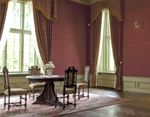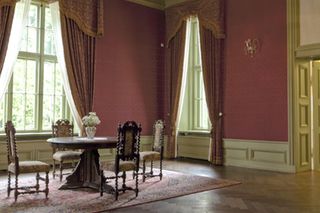Country house style: Understated elegance
Understated quality is king in this country house property market; gone are the days of bling and endlessly refitted kitchens says Carla Passino


A quiet revolution in taste is sweeping across the countryside. After years of buyers fighting over designer bathrooms and dernier cri kitchens, the economic slow-down has triggered a revival of the understated. ‘We are in a more austere environment and people's tastes have altered, albeit not consciously,' says James Grillo of Chesterton Humberts. ‘Overt demonstrations of wealth are perceived as unsuitable.' He credits the understated style of West Wick, near Pewsey, Wiltshire, as one of the reasons for the house's extraordinary sale last summer (Property Market, December 28, 2011).
George Bramley of Strutt & Parker believes that this surge of interest in decorative sobriety also owes much to a new approach to property buying that is becoming increasingly common these days: ‘A romantic ideal is what people are buying into. And if your house is all done up, you don't get that feeling.' Today's buyers are looking for attractive English architecture and period features in reasonable condition.
Mr Grillo goes further: for a house to be sought-after, he believes, ‘it needs to be well decorated, but not overly decorative you don't need that very expensive wallpaper or paint'. Nothing encapsulates this change in taste better than a new attitude towards the kitchen. Not only did property brochures once go into detail about the designer, make and model of the various appliances, but, explains Andrew Rome of Knight Frank, ‘people used to talk about how much they spent on their kitchen; if they did that now, you'd wonder why'.

In 2007, adds Property Vision's Edward Sugden, ‘if a kitchen had been in a house for six months, it was considered old and people wanted to rip it out'. Now, by contrast, ‘people don't want to show off. Everybody is de-leveraging and going back to core. Certainly, in the country-house market, buyers have gone back to basics: light, proportion and symmetry. A Georgian country house has stood the test of time, new bling hasn't'. This shift towards the understated extends as much to the size of a house as to the decor, according to Mr Rome. ‘Buyers are beginning to realise that less is more. A 10,000sq ft house isn't worth more to them than a 6,000sq ft to 7,000sq ft one.
Not many people need 10 bedrooms: they don't want to feel they're paying for them.' However, note agents, there is a marked difference between gentlemanly understatement and outright shabbiness. People are happy to buy a property even if the decor is a bit tired-they would rather make their mark on a house than have to take something out-but they want it to be in good working order. ‘You pay a premium for classic, traditional English architecture and style, but a property needs to be in the right state of repair,' says Mark Lawson of The Buying Solution. ‘It's important that quality is still there. People don't like an empty, dilapidated shell.'
Many buyers will draw the line at frayed carpets and bad paintwork, and most will be put off by structural work. ‘They don't want surprises,' comments Mr Sugden. ‘They want a classic country house that has been modernised and updated, with the plumbing and roof in order. It's a question of certainty: shabby chic is fine, but shabby isn't, because it could turn out to be a Pandora's box of problems that are costly and time-consuming to fix.'
Bring on the bling
Sign up for the Country Life Newsletter
Exquisite houses, the beauty of Nature, and how to get the most from your life, straight to your inbox.
- Understatement only appeals to UK buyers or overseas buyers with a passion for English architecture
- New money and foreign buyers still prefer houses
in tip-top condition with all the modern trimmings
- However, new houses built in statement areas such as St George's Hill, Wentworth and around Guildford are now being designed with more style and panache
- Mr Lawson says: ‘Buyers of these properties want everything to be new and the best, but refined. They will look at how the marble is joined, how high the skirting board is and what the weight of the doors is. Some of 2011's record-breaking sales have been for this kind of property'
* Subscribe to Country Life and save over £50 a year
Country Life is unlike any other magazine: the only glossy weekly on the newsstand and the only magazine that has been guest-edited by HRH The King not once, but twice. It is a celebration of modern rural life and all its diverse joys and pleasures — that was first published in Queen Victoria's Diamond Jubilee year. Our eclectic mixture of witty and informative content — from the most up-to-date property news and commentary and a coveted glimpse inside some of the UK's best houses and gardens, to gardening, the arts and interior design, written by experts in their field — still cannot be found in print or online, anywhere else.
-
 How many puppies in the average litter? Country Life Quiz of the Day
How many puppies in the average litter? Country Life Quiz of the DayPlus a 1960s house, Hollywood's most famous cavewoman and more in Friday's quiz.
By Toby Keel Published
-
 Love, sex and death: Our near-universal obsession with the rose
Love, sex and death: Our near-universal obsession with the roseNo flower is more entwined with myth, religion, politics and the human form than the humble rose — and now there's a new coffee table book celebrating them in all of their glory.
By Amy de la Haye Last updated

